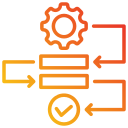Integrating Automation Tools for Seamless Marketing Operations
Chosen theme: Integrating Automation Tools for Seamless Marketing Operations. Welcome to a space where fragmented tools become a single, flowing system. We’ll explore practical blueprints, real stories, and clear steps to make your marketing stack orchestrate itself—so your team can focus on creativity, strategy, and growth.

The Integration Blueprint: Connecting Systems into One Marketing Nerve Center
Map Your Stack and Data Flows
Start with a whiteboard session: list every tool, the data it produces, who uses it, and where it should go. Define canonical entities—lead, contact, account—and document identifiers, events, and triggers. A clear integration map prevents rework and reveals quick wins.

From Leads to Revenue: Automated Journeys that Actually Convert
Use behavioral signals—page depth, pricing visits, webinar duration, and return frequency—to personalize cadence and content. Branch journeys based on intent, not vanity scores. Suppress outreach after negative signals to protect brand trust and keep inbox placement high.
Blend fit and intent signals, then route to the right owner with round-robin and territory rules. When enrichment fills gaps, update scores instantly and log reasons. Sales should see precisely why a lead qualified, within the CRM they already live in daily.
Automate feedback collection on disposition codes, objections, and timeline. Sync that context back into nurturing logic to improve segmentation. A closed-loop system steadily lifts conversion rates because it learns, adjusts, and stops repeating ineffective plays across your funnel.
Measurement that Matters: Attribution, Experiments, and Decision-Ready Dashboards
Attribution Without Illusions
Pair rule-based models with data-driven views, and always expose model assumptions. Track offline touches, partner influence, and sales-assist activities. If a channel looks too perfect, validate with holdouts and lift studies before you reallocate budget based on misleading correlations.
Choose North Star and Leading Indicators
Define a single north star—pipeline created or revenue influenced—and connect it to earlier indicators like demo requests and qualified meetings. Instrument conversion rates between lifecycle stages so you can spot friction and fix specific steps rather than guessing wildly.
Automate Experimentation and Reporting
Use feature flags, audience splits, and calendarized tests. Auto-publish results to shared dashboards with confidence intervals and guardrails. Archive learnings in a searchable knowledge base so new teammates avoid repeating old experiments and accelerate impact from day one.

Change Management: Teams, Playbooks, and the Human Side of Automation
Establish a RACI across marketing ops, sales ops, analytics, and security. Weekly standups, a public roadmap, and a decision log prevent surprises. When everyone knows their role, approvals speed up and integrations reach production without endless last-minute objections.
Change Management: Teams, Playbooks, and the Human Side of Automation
Publish bite-sized playbooks with screenshots, short videos, and copy-ready templates. Host office hours for live troubleshooting and record every session. Tie training to specific outcomes—faster follow-up or higher reply rates—so teams feel the benefit, not just the process overhead.

Consent, Privacy, and Data Minimization
Sync consent states across tools, store proofs of capture, and honor regional preferences automatically. Minimize personally identifiable data wherever possible. Automate deletion requests and age-based retention so regulations become a design principle, not a last-minute scramble.

Reliability by Design
Set SLOs for latency, throughput, and error rates. Monitor retries, queue backlogs, and webhook failures with alerts that reach humans quickly. Build idempotent workflows so duplicate events cannot cause double sends, duplicate records, or inflated revenue figures in dashboards.

Vendor Risk and Business Continuity
Evaluate vendors on SOC reports, breach history, and export options. Keep runbooks for outages and test failovers quarterly. If a critical connector dies, your backup path—flat files, batch API, or alternate iPaaS—should keep campaigns alive without frantic midnight engineering.



Join our mailing list
